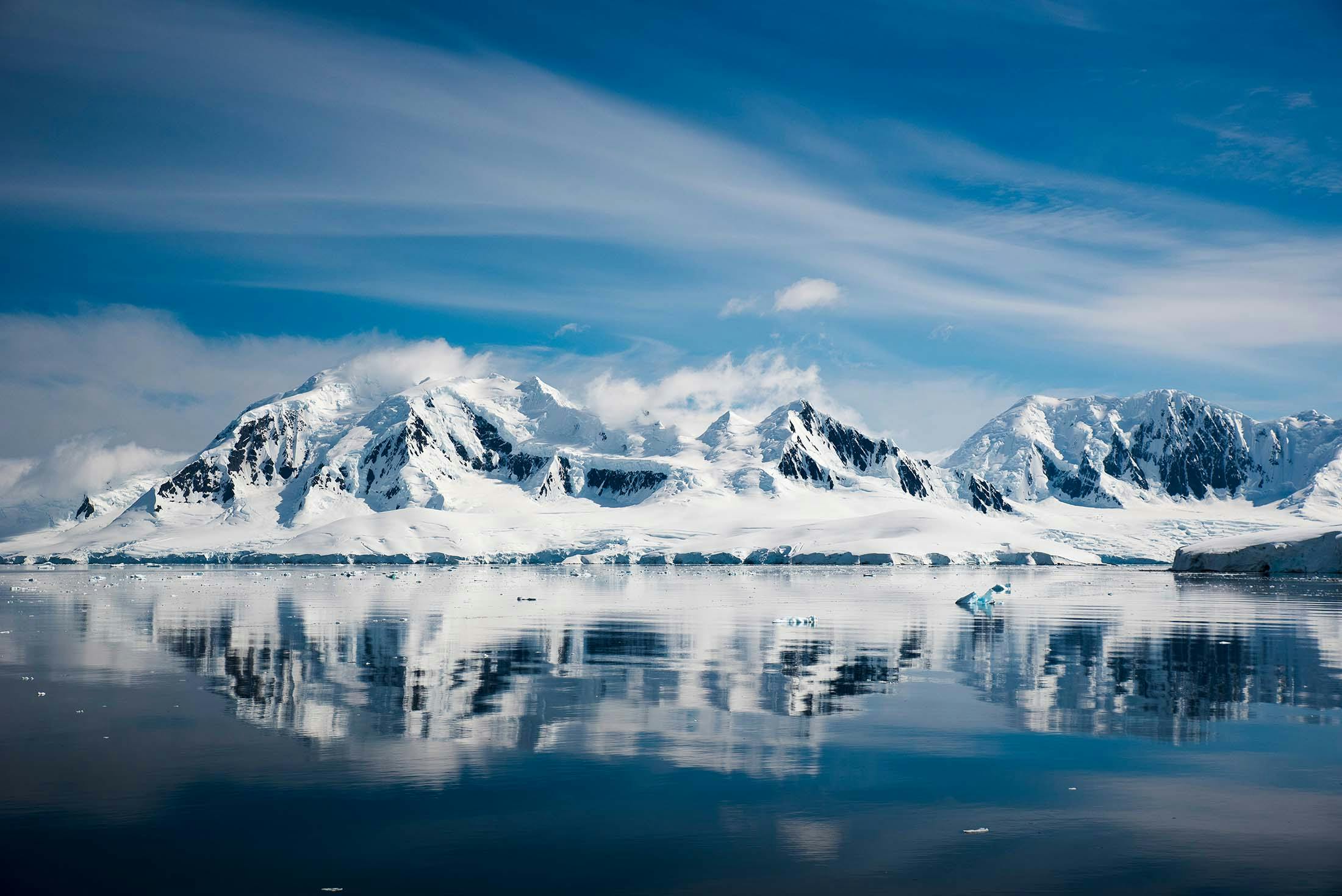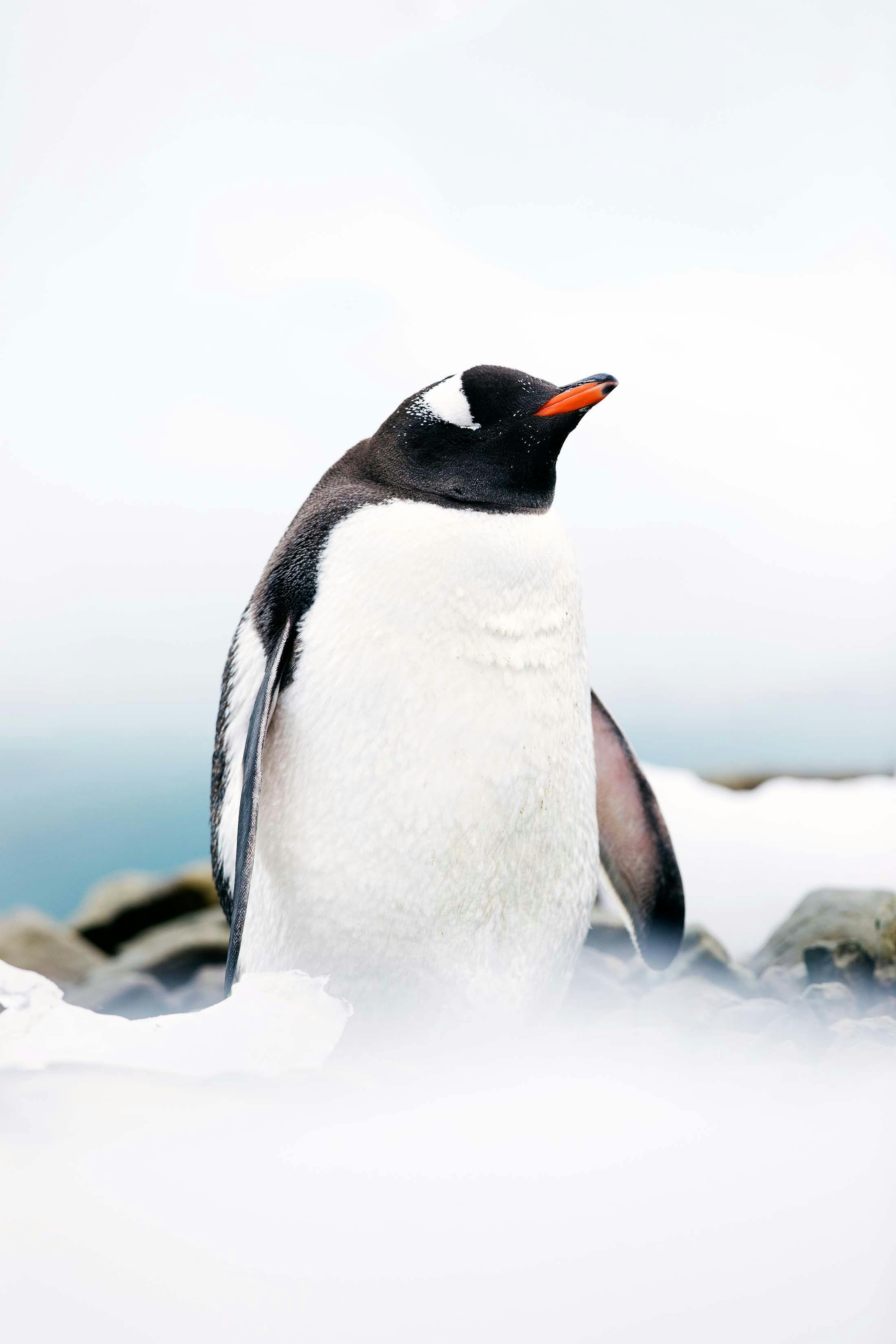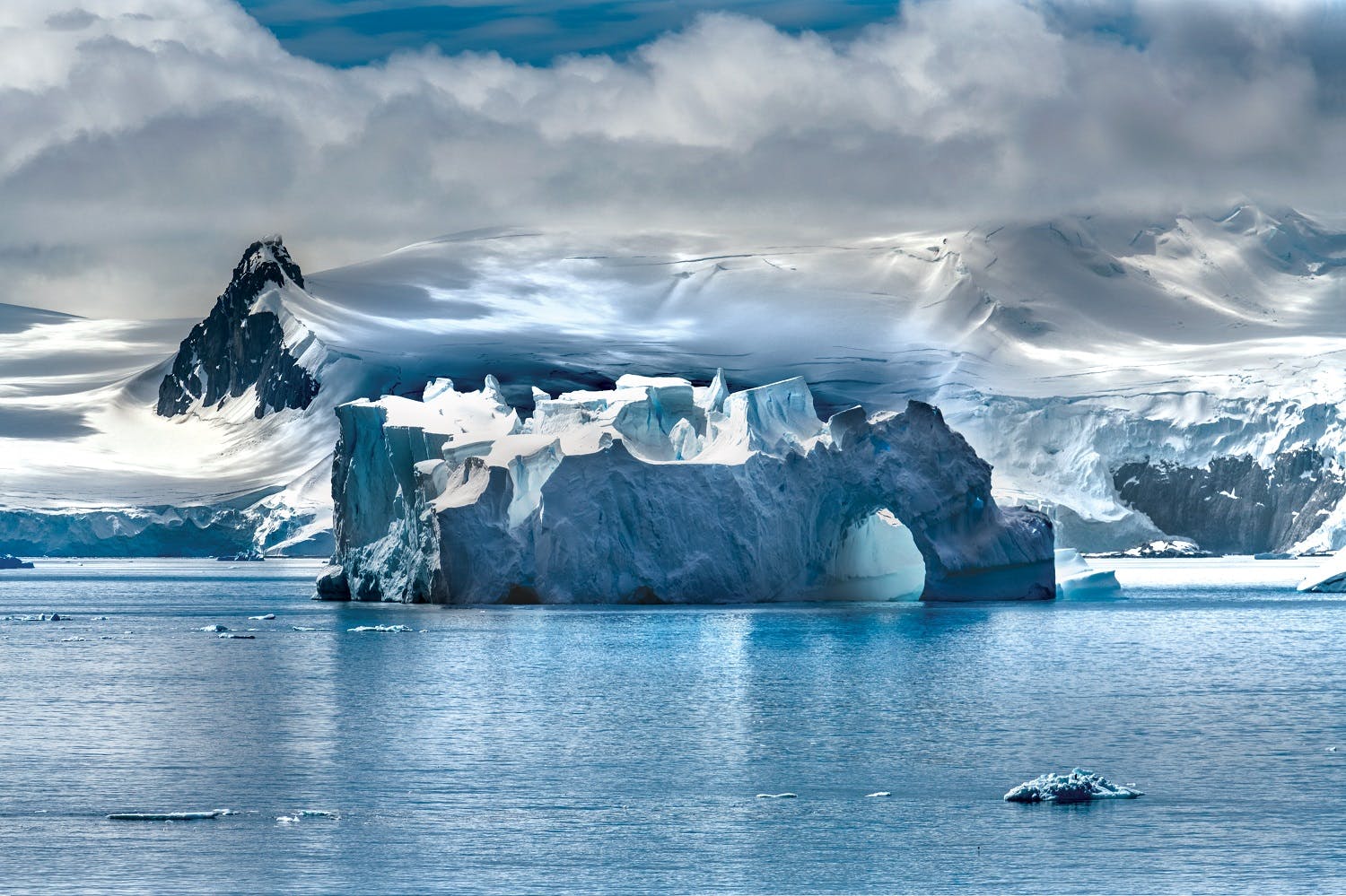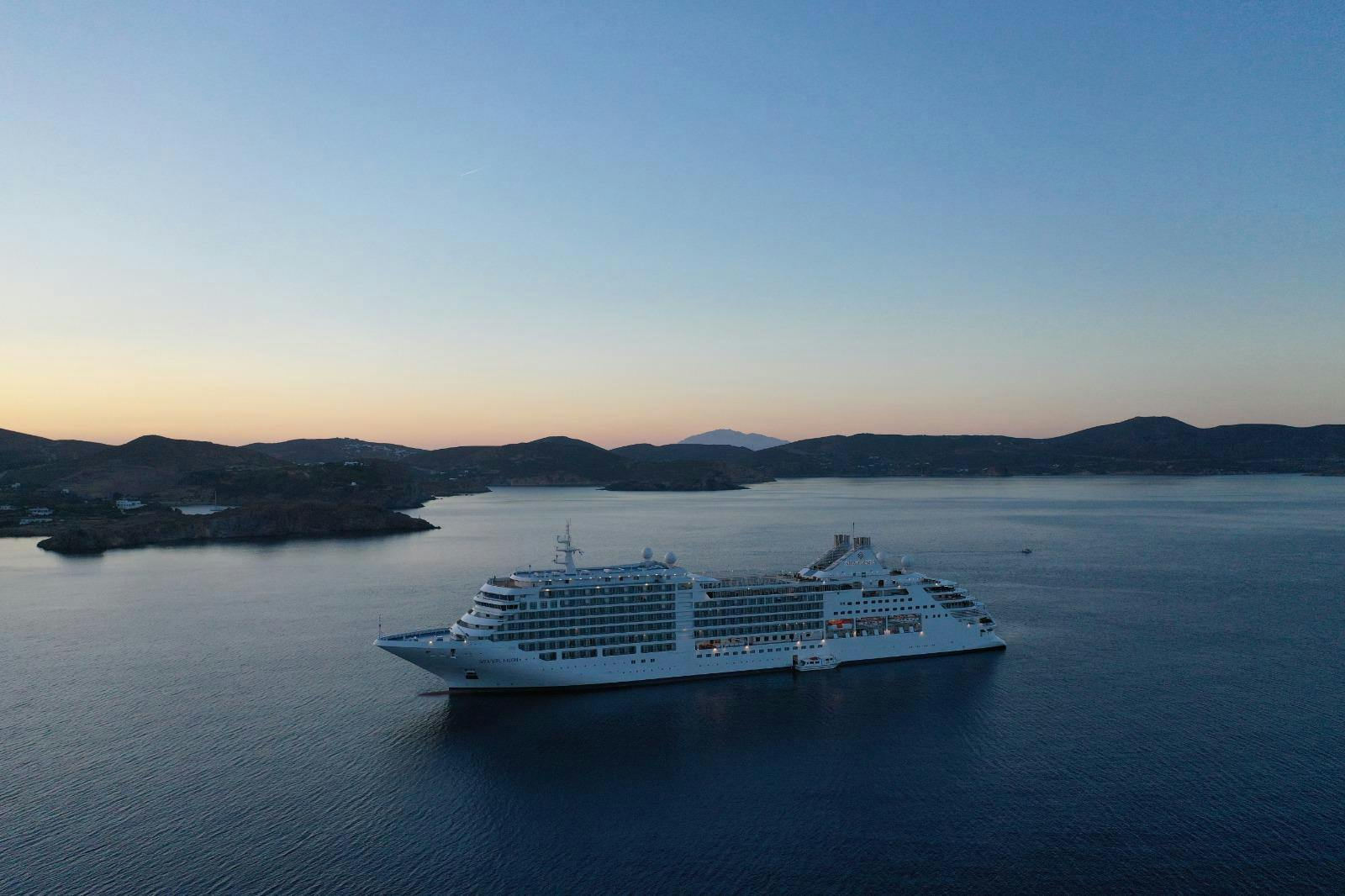On an Antarctica Cruise, You’ll See 50,000 Shades of Gray, Silver and Blue
It was the colors that silenced me as soon as I arrived in Antarctica: the aqua ice turning the waters light blue, the red algae across rockfaces, the many shades separating white from turquoise, the water suddenly a deep, rich sapphire. I had expected a black-and-white landscape of penguin-coloured rock and snow on my Antarctica cruise. But now I felt myself an ant, inching through a jewelry store in Monte Carlo.
Of course, there’s little to compare with the first sight of Antarctica: from our suite at the prow of the Silver Cloud, we glided, our third morning at sea, into a world of snow and blue-green silences. We’d already spotted a black-browed albatross and three fin whales breaching alongside the ship at the southern edge of the Drake Passage; now, in the hush of early morning, we pulled into a turquoise shimmer of clarity and noiselessness that took the breath away.
Another world
I’ve been traveling, almost uninterruptedly, for 45 years — it’s become my life as well as my passion — but I’d never seen a landscape quite so otherworldly and pristine as this. Not a sign of human habitation; and it was the absences — of telegraph poles and cars and even the possibility of a house — that made me feel as if I’d been transported to a parallel universe.
Somehow, every one of us was rendered quiet and attentive by the pervading hush: in the Tor’s Observation Lounge the previous afternoon, more than 30 red parka-clad souls stood silent as we watched the whales rise and sink, as if to utter a word might be to break the spell.

On every day that followed, my sense of wonder was expanded: four leopard seals stretched out on a rock, wriggling back and forth like itchy sunbathers; the thunderous roar of ice carving in Neko Harbour; a wordless morning sailing under cloudless blue skies between Nature’s sculpture-park of icebergs near Pleneau: there a giant rabbit; here a sunken ship; over there a seahorse, and there a structure as elaborately futuristic as Oscar Niemeyer’s Museum of Contemporary in Niterói. “We’re bumping through a cocktail,” my wife said of the giant ice-cubes, many stories high. And then again a silence that fell around us as in church.

I’d first made a resolve to visit Antarctica 13 years ago when a science writer I met along the road in a Benedictine monastery high above the Pacific Ocean told me, “The only place I’ve ever been like this — the sense of space, of stillness — is Antarctica. You’ve got to go there!” In those days, however, the only way I could find to get to the far south was through a National Science Foundation program for Artists and Writers. I’d seldom applied for any kind of fellowship, but I gathered all the materials and prepared myself.
Then I came to my senses: three weeks, as a clumsy urbanite, in McMurdo, after a cargo flight from New Zealand? I couldn’t summon the courage. Only in 2019, when I fell into the Silversea orbit, did the possibility of Antarctica suddenly glide into view again.
Still, nothing I’d seen in Tibet or Wyoming or Patagonia had prepared me for the scale and expansiveness of the southern continent. And if you’d told me, a month before, that I’d be trudging up a steep icy slope through heavy snowfall, without poles, above a forlorn hut and a rookery of flightless birds, in a place called Paradise Bay, I’d have told you the name was a bitter joke. But here I was, at the top, looking across acres of skies and horizons, and all I could think of was heaven.
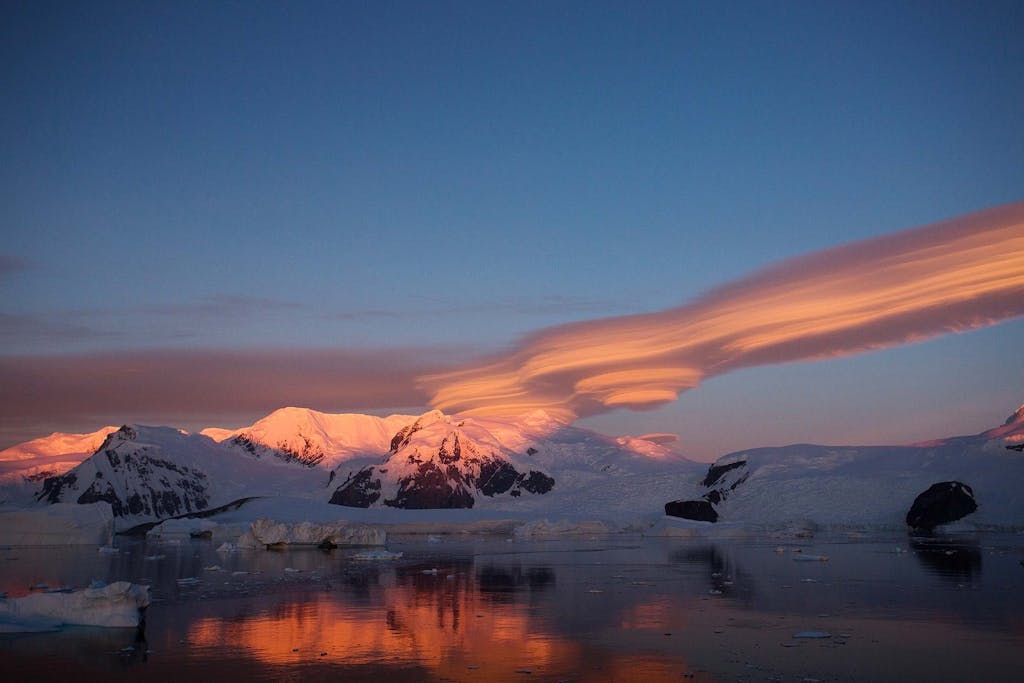
Nothing can compare
Penguins were shooting through the water below, as sleek and purposeful as sharks. They were porpoising in ranks through the air like cheerleaders. They were throwing back their heads to let out unearthly squawks and flapping up sheer slopes of ice like tireless ski instructors. I’d once walked among a colony of 2 million of the birds in Punta Tombo to the north, but that could not compare with seeing them in their truest element, feeling something like a penguin myself, and watching hundreds gathered along the shore as if to greet the Queen Mary as she docked in 1936.
In time, the richness of colors across what I’d imagined to be a monochrome landscape became my metaphor for the depth and variety of all Antarctica. Ice-floes were glowing jade at their edges, and a rocky slope was pink with freshwater algae (and penguin guano). The firedot lichen above the rocks where cormorants build nests out of decades-old fishing-lines and seaweed was ochre. And the silver light the sun was casting across distant lines of blue-flecked ice, after a day of dazzled blue since 4 a.m.: well, I couldn’t put a word to the variety of seasons and weather all around me in a 360-degree panorama.
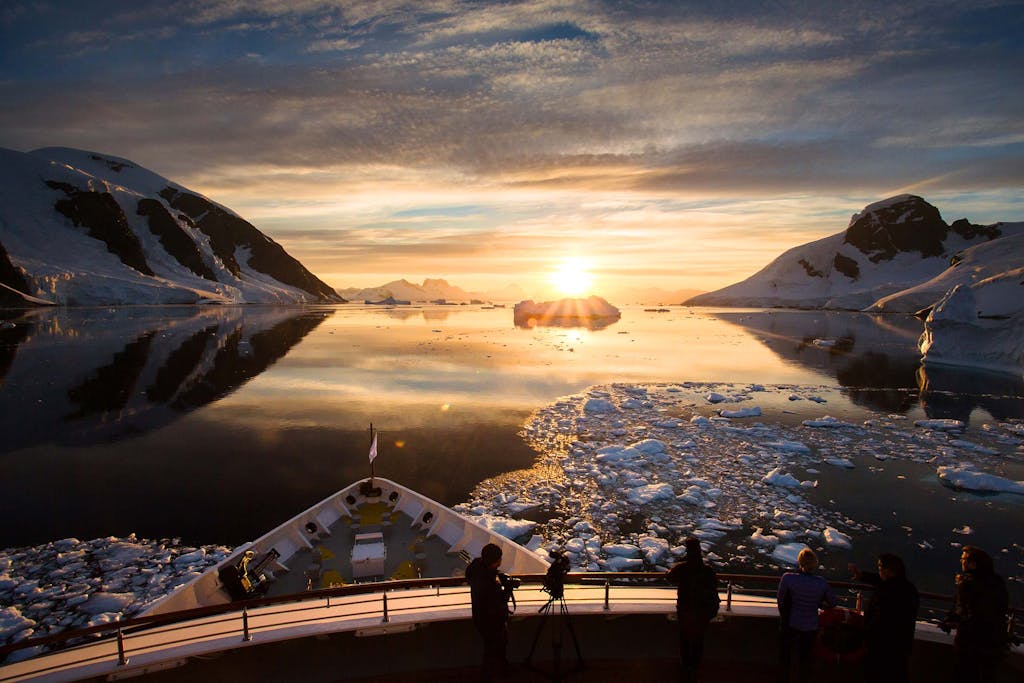
What struck me, as I left, is that no words — or photographs or video — can do justice to the scope of what one sees in this largely undiscovered continent. And this is part of the liberation that an Antarctica cruise represents. Little chance to squint down at a tweet, small incentive to sit numbly in front of a TV screen. Suddenly I was in the thick of life, unmediated, in all its immensity and capacity for surprise. “A man’s moments of serenity are few,” I remembered Adm. Richard Byrd having written, after being stranded for five months alone in a shack in Antarctica. But, he concluded, “A few will sustain him a lifetime.”
Ready to travel to Antarctica? Learn more here.



